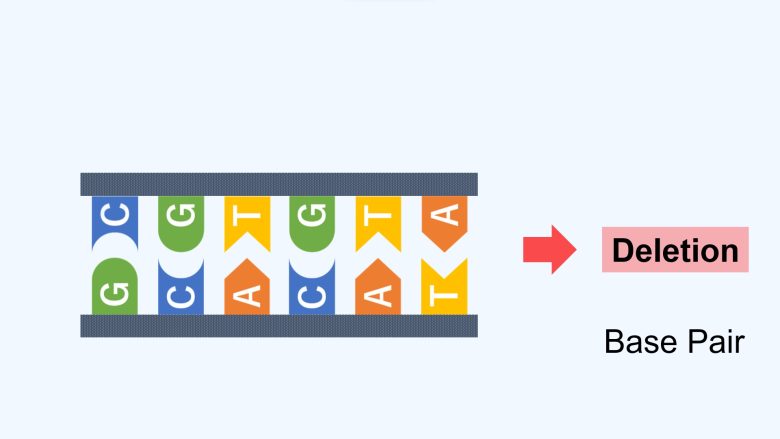Mutations
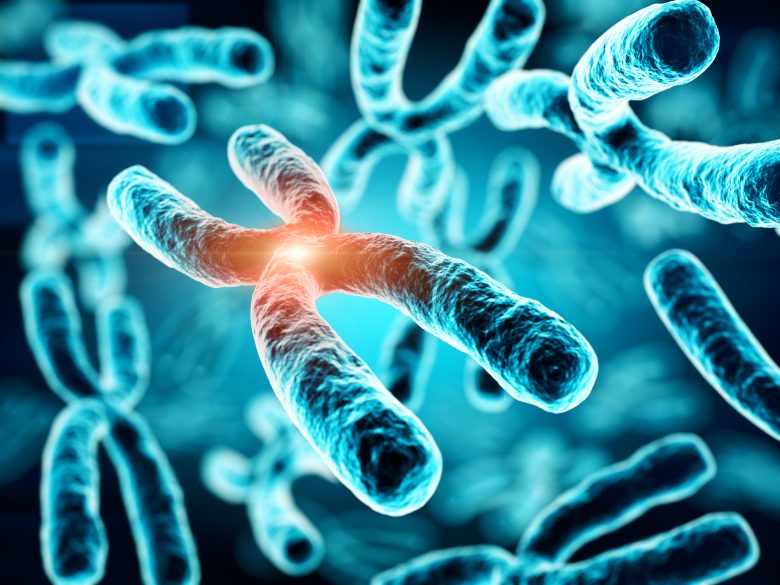
Next, I will explain how reactive oxygen species (ROS)-induced DNA damage can cause mutations.
Mutations come in a variety of types, ranging from small-scale mutations, such as base substitutions and base-pair deletions, to large-scale mutations, such as chromosome structural abnormalities and aneuploidy.

Table of ContentsAll_Pages
Base Substitutions
When base oxidation and base loss (abasic site), which are DNA damage, are carried into the DNA synthesis phase, mutations called base substitutions occur.
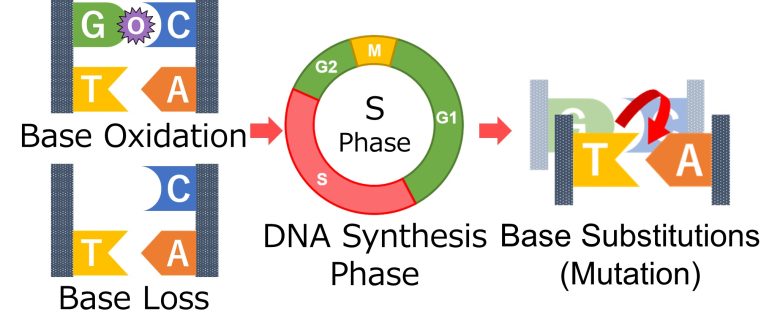
A base substitution is a type of mutation where one base in a sequence of DNA bases is replaced by another base.
In the example below, a guanine-cytosine pair is replaced by a thymine-adenine pair.

DNA Replication Process
Here is a brief description of the DNA replication process.
- Unwind DNA double strands.
- Using the original DNA strand as a template, add paired bases to the new DNA strand.
Guanine and cytosine, and thymine and adenine are always paired, so if you know the bases of the original DNA, you know which bases to add to the new DNA.
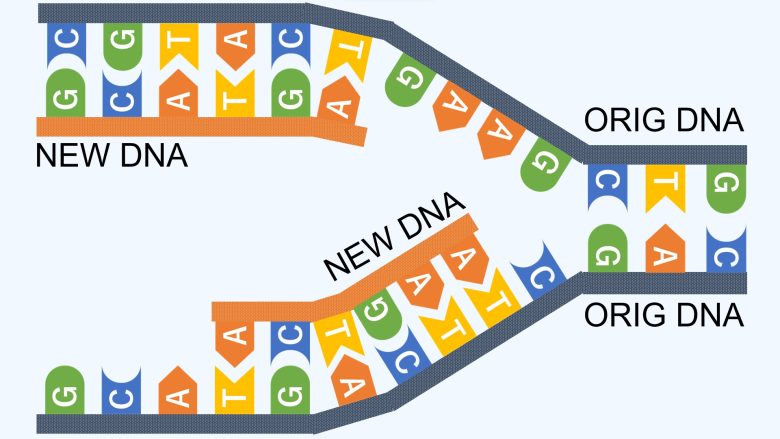
Base Substitution from Base Oxidation
A base substitution occur when an oxidized base is encountered during DNA replication.
When DNA is replicated with a guanine oxidized, an adenine is incorrectly added. When DNA is replicated again, a thymine is added against the adenine. (Klaunig et al. 2009)
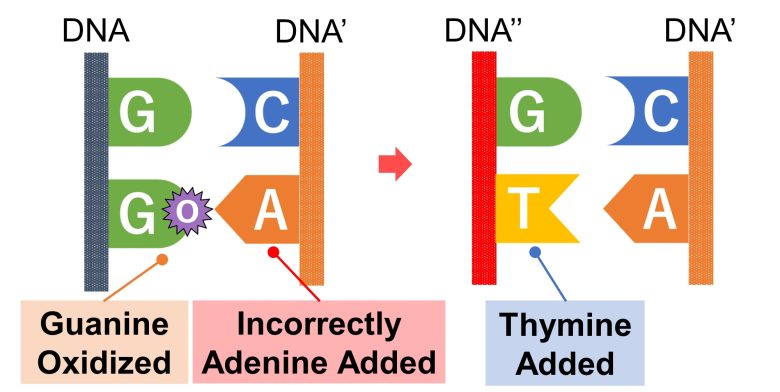
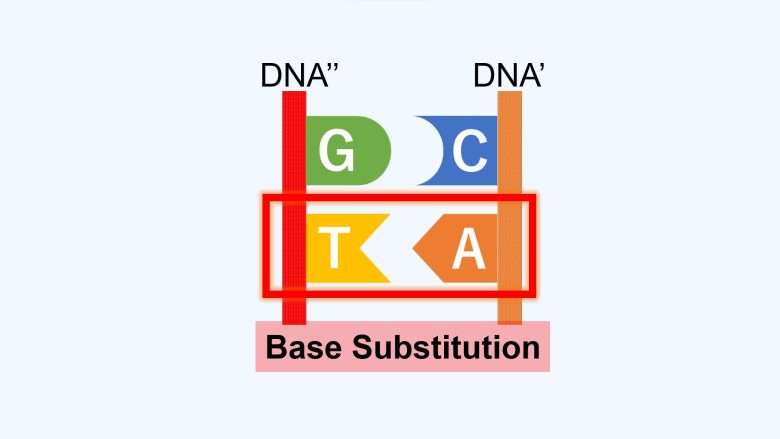
That is, a mutation occurs where a guanine-cytosine base pair is replaced by a thymine-adenine base pair. (Klaunig et al. 2009)

Base Substitution from Base Loss
During DNA replication, if no base is present, any base is added, especially with an adenine favored. When DNA is replicated again, a thymine is added against the adenine. (Talpaert-Borlè 1987)
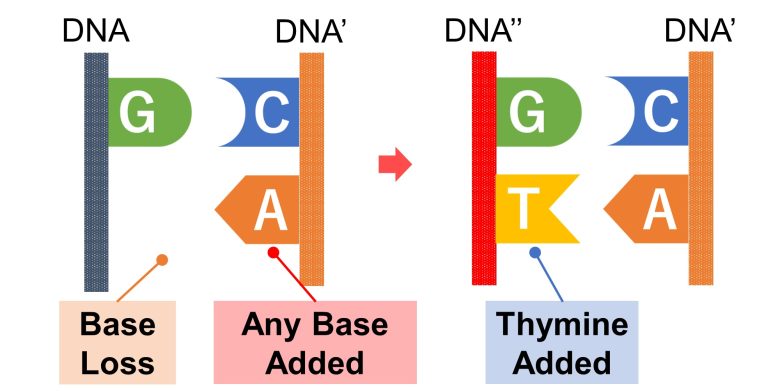
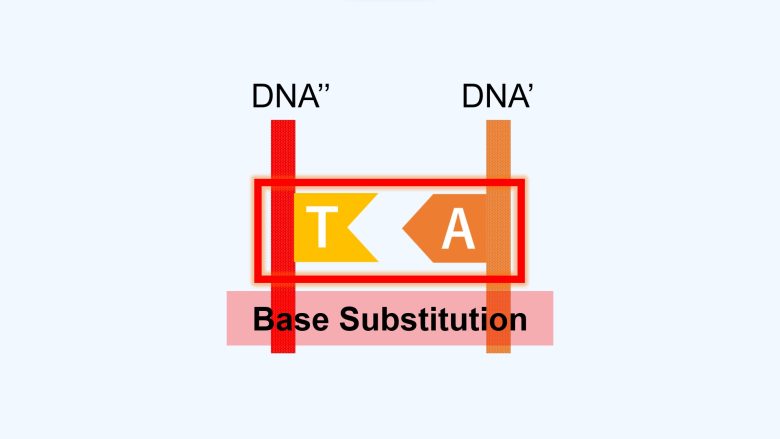
That is, a mutation occurs where any pair of bases is replaced by a thymine-adenine pair.

Replication Stress
When a single-strand break, which is DNA damage, is carried into the DNA synthesis phase, replication stress occurs.
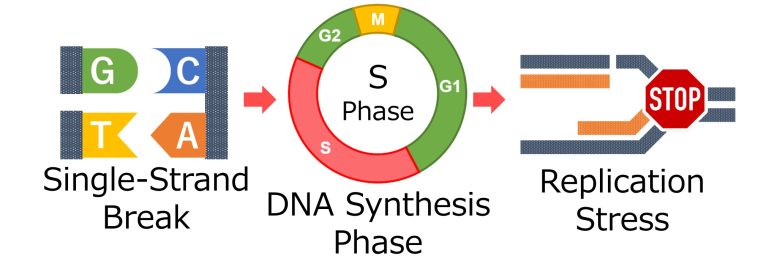
Replication stress is a phenomenon where DNA replication is disrupted and stops by factors such as ROS, UV rays, etc.
Replication Stress from Single-Strand Breaks
When a single-strand break is encountered during DNA replication, the replication stops there and replication stress occurs. (Gelot et al. 2015)
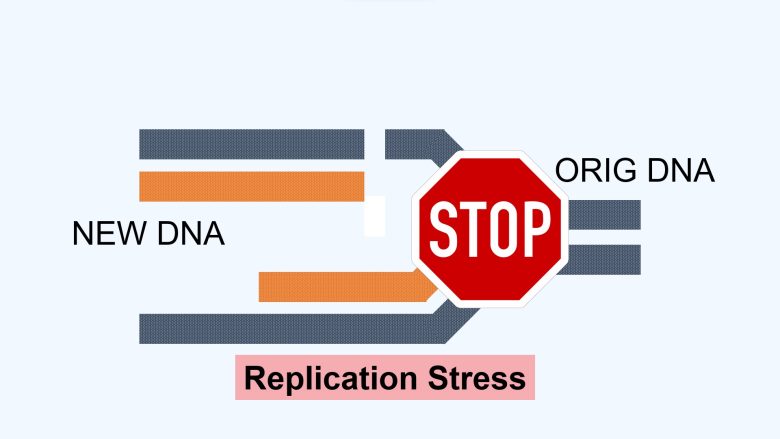
Replication stress causes further large-scale mutations, chromosome structural abnormalities and aneuploidy.
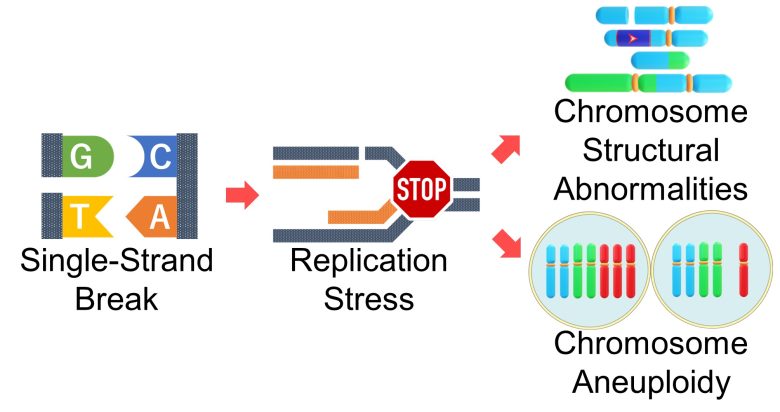
This is explained on the next page.
Chromosome Structural Abnormalities
When a double-strand break, which is DNA damage, occurs, it causes large-scale mutations, chromosome structural abnormalities.
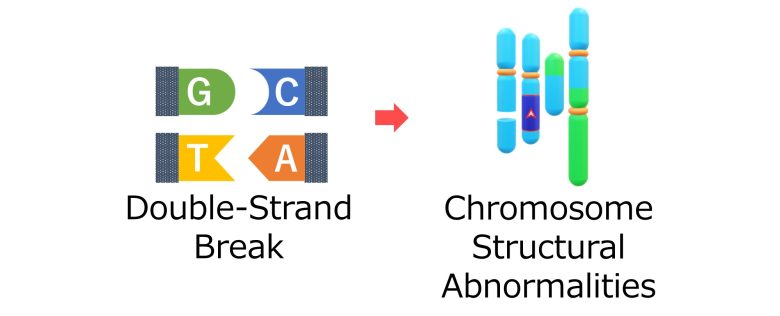
What is a Chromosome?
DNA is stored wrapped around proteins called histones. Histones are further spirally folded into a structure called a chromatin.
A complex of these DNA and proteins is called a chromosome.
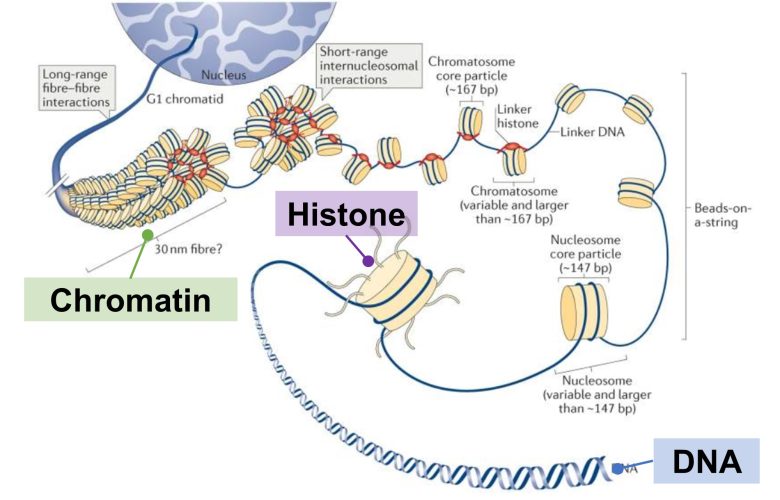
Structure of a Chromosome
( Cited and Modified from Fyodorov et al. 2017 )
Chromosomes are usually found in the nucleus of a cell in a string-like form.
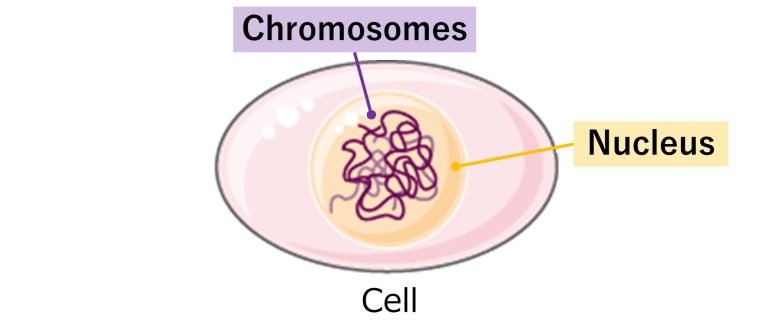
On the other hand, in the cell division phase, the replicated chromosomes, including DNA, condensed into stick-like structures.
Such a structure is needed to ensure equal distribution of replicated chromosomes.
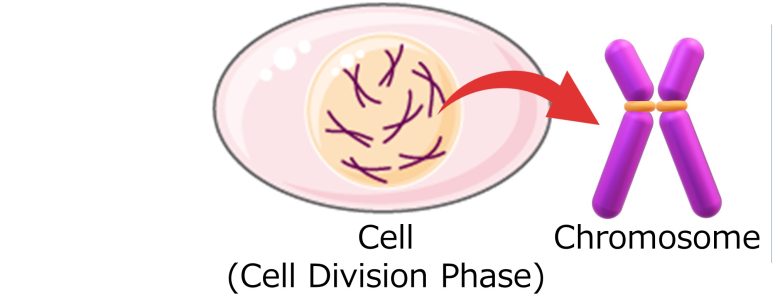
Distribution of Chromosomes
In the cell division phase, cell subunits called centrosomes migrate to the poles of the cell.
The central narrow region of a chromosome is called a centromere. The centromere is linked to the centrosome through a cell skeleton called a microtubule.
This entire structure that separates the chromosomes into two cells is called the spindle.
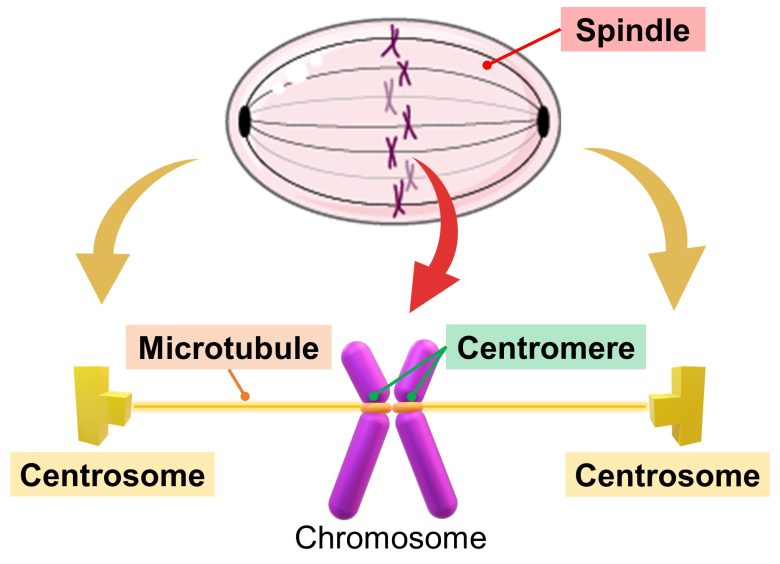
The chromosomes are then drawn to the centrosomes at the poles of the cell. This distributes the chromosomes between the two cells.
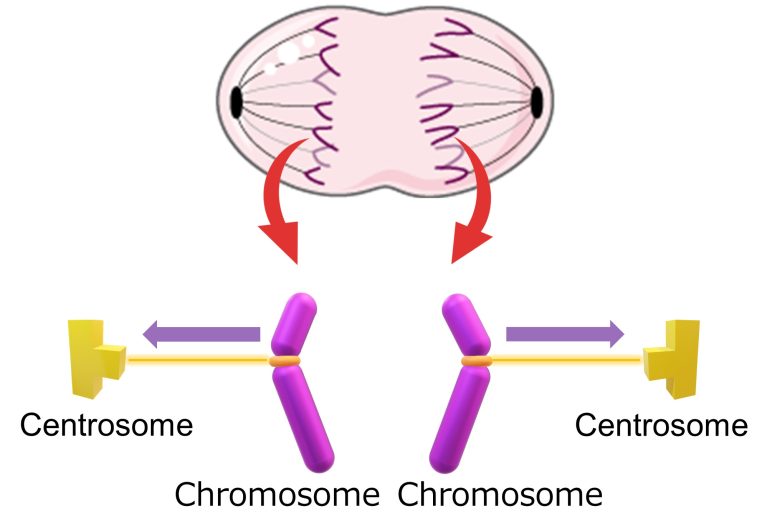
Chromosome Structural Abnormalities from Double-Strand Breaks
Double-strand breaks, like any other damage, are attempted to be repaired, but repair errors cause large-scale mutations called chromosome structural abnormatities (chromosomal rearrangements). (Shibata and Jeggo 2020)

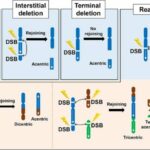
Chromosome Structural Abnormalities due to Repair Errors of Double-Strand Breaks
( Cited and Modified from Shibata and Jeggo 2020 )
- Double-strand breaks cause chromosomal structural abnormalities such as deletions, inversions, and translocations. (upper row)
- Depending on the location of the break, chromosomes that are fatal to cells such as acentric chromosomes and dicentric chromosomes may occur. (lower row)
Deletion
It is the one where DNA double strands have been broken and left without joining.

Or, it is the one where DNA double strands have been broken at two locations and incorrectly joined together.

In both cases, chromosome fragments appear besides the main bodies of chromosomes.
Inversion
It is the one where DNA double strands have been broken in two locations and joined upside down.

Translocation
It is the one where double strands have been broken in two DNA and the chromosome fragments have been switched.
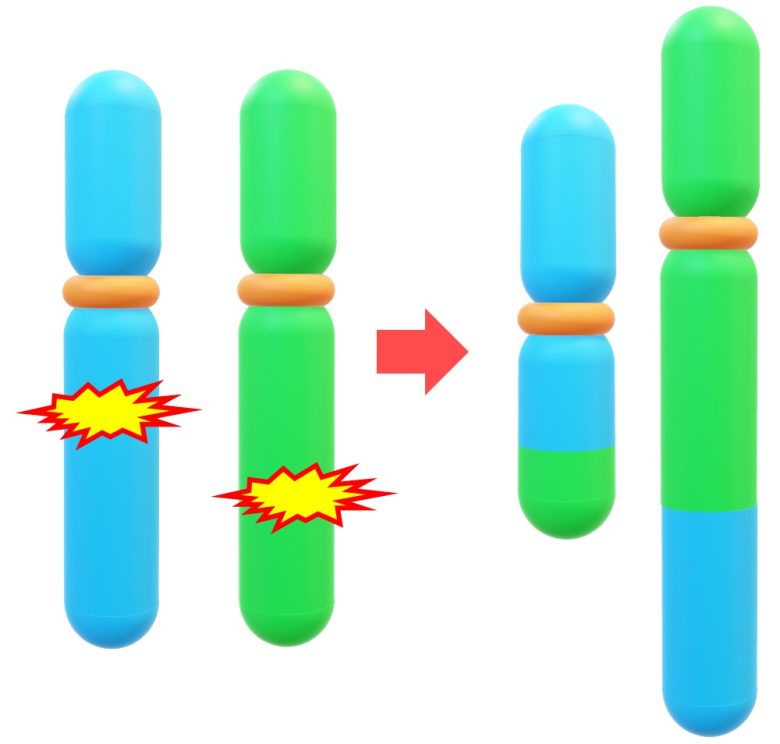
Acentric and Dicentric Chromosomes
Depending on the location of the double-strand breaks, a chromosome with no centromere, an acentric chromosome, or with two centromeres, a dicentric chromosome, may appear.
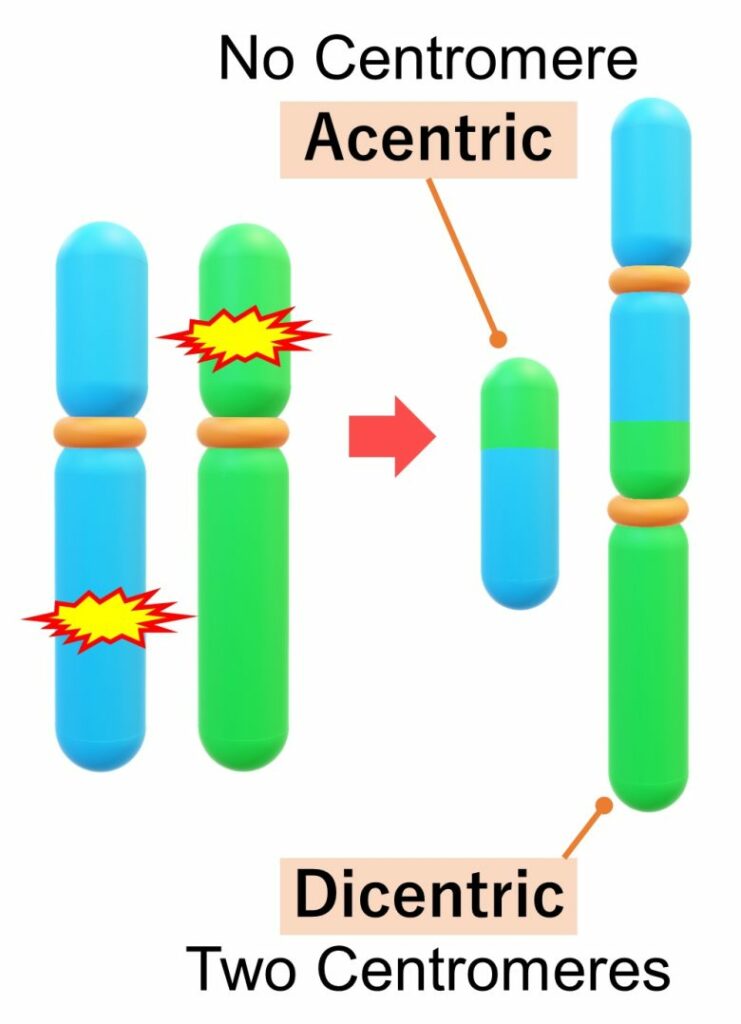
Exacerbation of Structural Abnormalities
When chromosomes become structurally abnormal, further problems such as micronuclei and chromosome bridges occur in the cell division phase, exacerbating the chromosomal structural abnormalities.
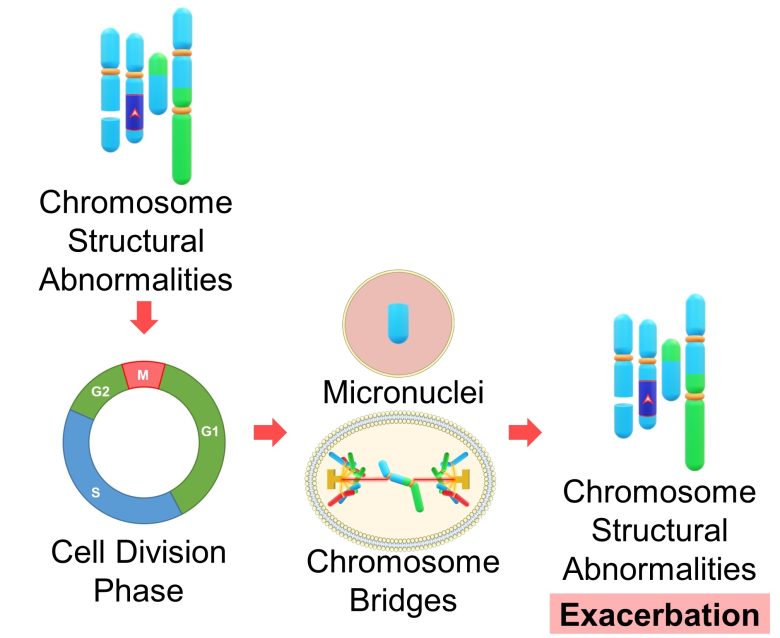
Deletions Exacerbate Structural Abnormalities
Chromosome fragments produced by deletions do not have centromeres. Therefore, they are not drawn to either side of the cell during cell division and are left behind. They in turn form a small cell nucleus called a micronucleus. (Norppa 2003)
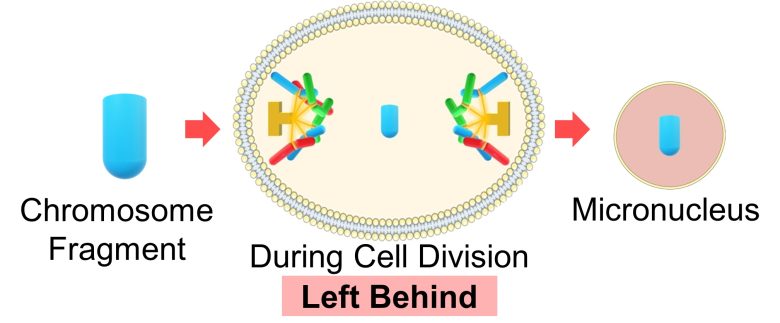
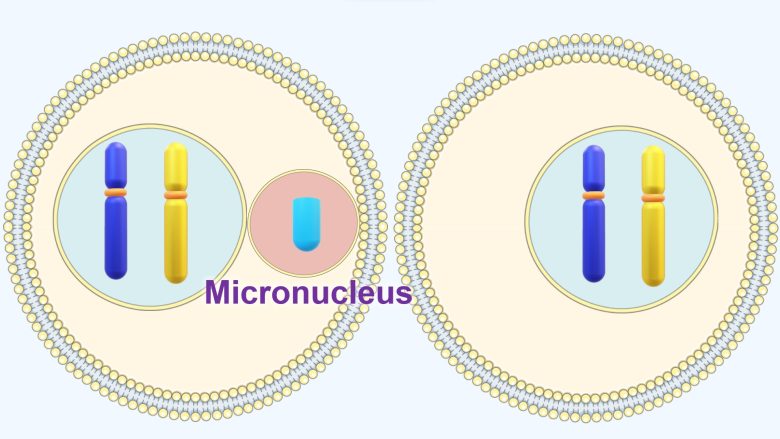
A 2012 US study found that newly generated micronuclei undergo defective DNA replication, resulting in fragmentation of the chromosome in the micronucleus, and that these fragmented chromosomes eventually reincorporated into the daughter cell nuclei at a significant frequency. (Crasta et al. 2012)
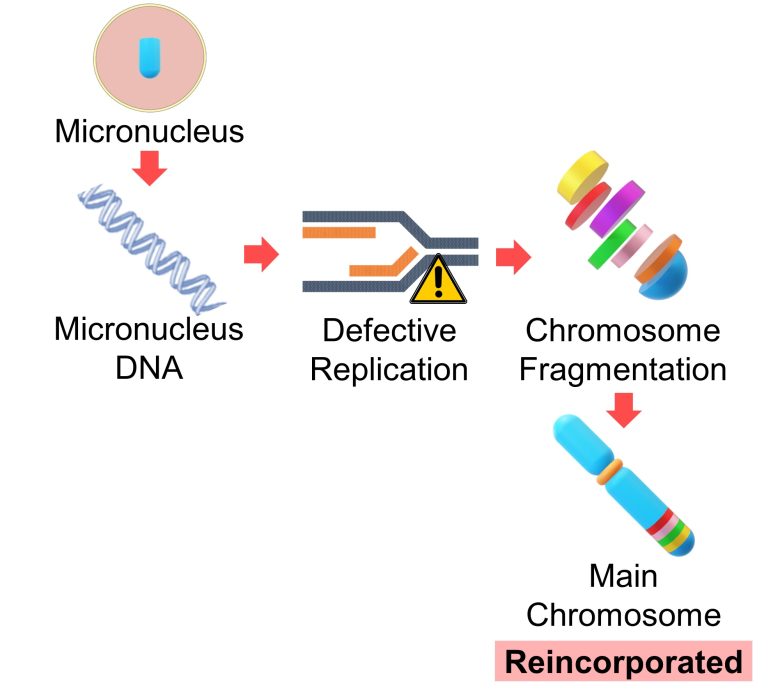
Therefore, micronuclei can exacerbate chromosomal structural abnormalities.
Acentric Chromosomes Exacerbate Structural Abnormalities
Like chromosome fragments, acentric chromosomes do not have centromeres. Therefore, they are not drawn to either side of the cell during cell division, left behind, and in turn form a micronucleus. (Norppa 2003)
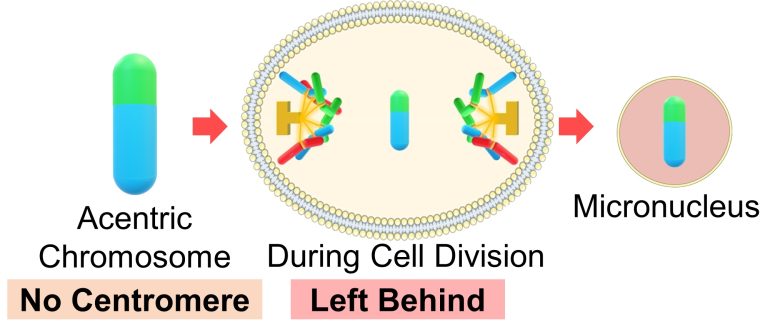
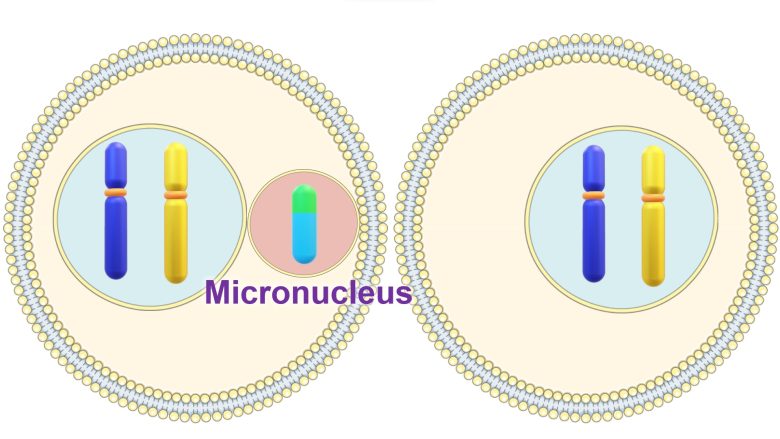
As mentioned above, micronuclei can exacerbate chromosomal structural abnormalities.
Dicentric Chromosomes Exacerbate Structural Abnormalities
On the other hand, dicentric chromosomes have two centromeres, which are drawn from both sides of the cell during cell division, and this causes cell division to be arrested.
This state of arrested cell division is called chromosome bridge.
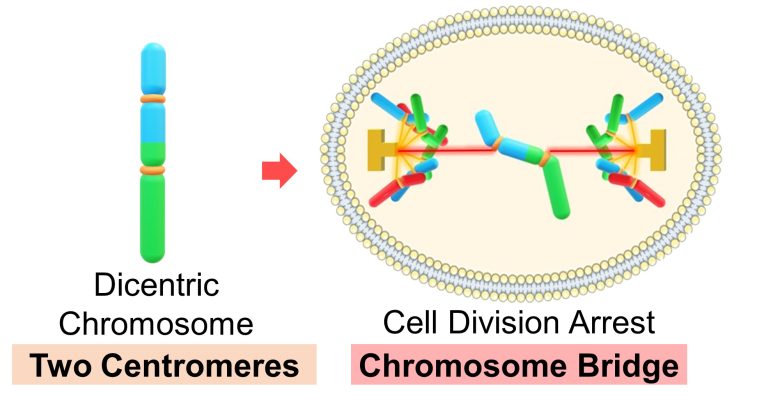
The chromosome bridge is resolved by the breakage of the dicentric chromosome. The resulting fragmented chromosomes often fuse with other chromosomes and even form a new dicentric chromosome. (Gascoigne and Cheeseman 2013)
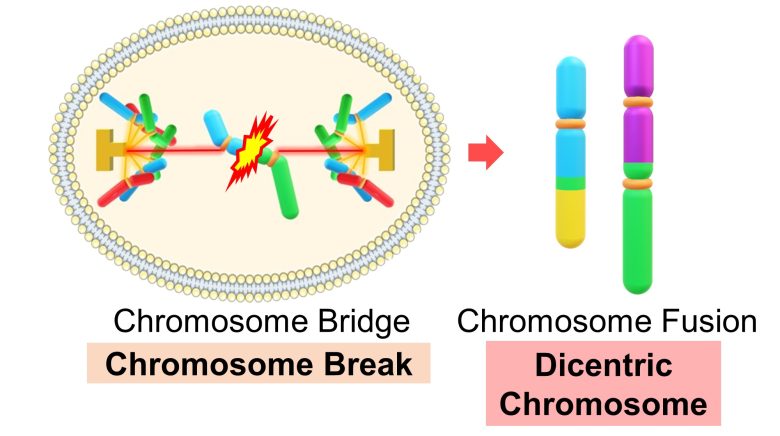
This process of cascading chromosomal damage has been termed the “breakage–fusion–bridge cycle” and is strongly associated with cancer initiation. (Gascoigne and Cheeseman 2013)
Base Pair Deletion
Repair errors of double-strand breaks cause chromosome structural abnormalities, not only that, but also their incomplete repair results in a mutation called a base pair deletion.

Base pair deletions are small-scale deletions, meaning the loss of a few base pairs, as distinguished from large-scale deletions that span large regions of the chromosome, as described above.
Base Pair Deletion from Double-Strand Breaks
There are several methods of repairing double-strand breaks. Some repair completely, while others repair incompletly, which leads to mutations. (Gelot et al. 2015)
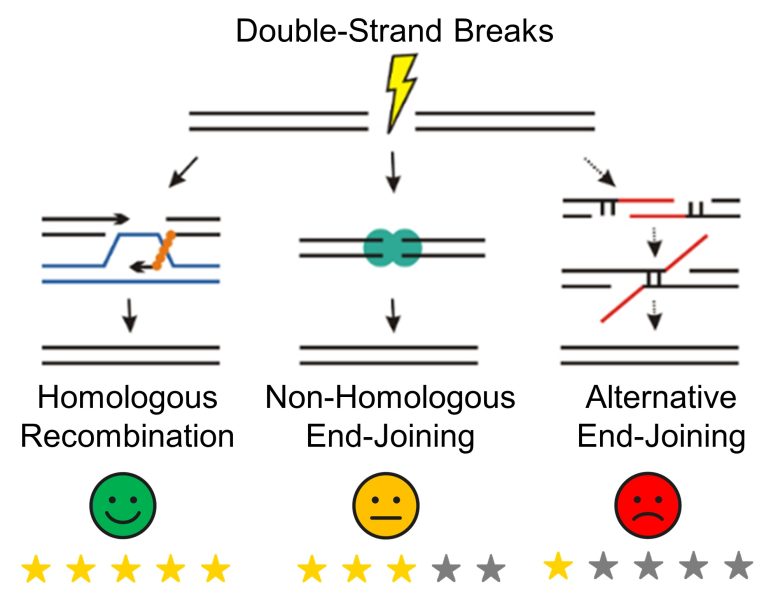
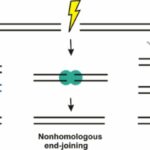
Methods of Repairing Double-Strand Breaks
( Cited and Modified from Popp et al. 2017 )
- Homologous recombination repair is a mistake-free and accurate repair method that uses intact identical or homologous DNA sequences. (LEFT)
- Non-homologous end-joining is a repair method that directly joins the DNA break surface, which can result in a deletion of a few base pairs at the break site. (MIDDLE)
- Alternative end-joining (A-EJ) is a problematic repair method that frequently causes base pair deletions. (RIGHT)
Normally, homologous recombination repair is selected in the DNA synthesis phase and beyond, otherwise non-homologous end joining is selected, but A-EJ is said to be used instead when DNA damage occurs frequently. (Gelot et al. 2015)
That is , even if the correct DNA is joined together, depending on the method used to repair the double-strand break, a base pair deletion may accompany it, resulting in mutations.
